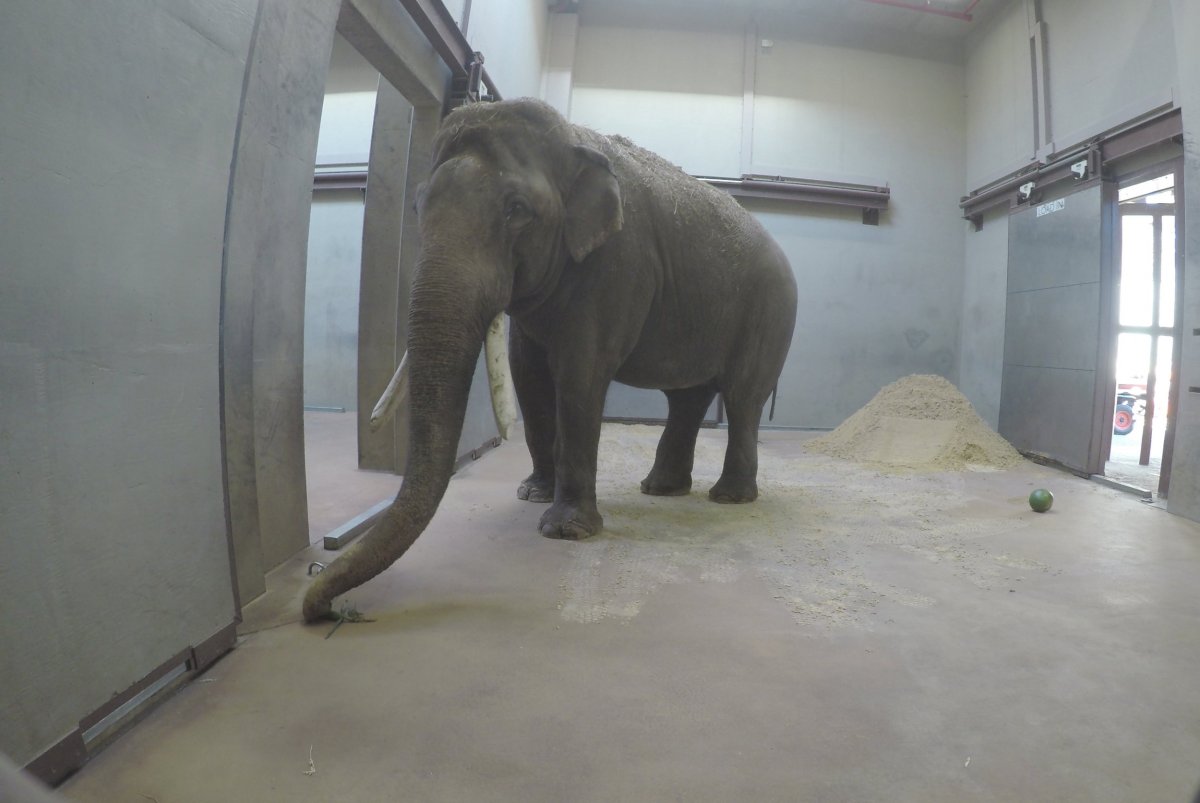
Spike the elephant is one of Washington, D.C.'s newest residents. The 14,000-pound adult male elephant arrived early Friday morning and promptly exited his travel crate to enjoy a snack in his new home, Smithsonian's National Zoo.
The 36-year-old elephant, who stands about nine and a half feet tall, traveled 900 miles from Tampa Bay's Busch Gardens to the Smithsonian in less than 24 hours with the help of dozens of people. The supply list for the trip included 12 bales of hay, 10 watermelons, a bushel of apples, a case of honeydew melons and much more.
Spike's trip started around 12:30 p.m. Thursday, and after about 20 hours on the road, he arrived at his new home and backed out of his crate fairly quickly, Bryan Amaral, senior curator at the Smithsonian, told Newsweek.

It would have been quite a sight to see for anyone passing by. Elephants are transported in crates that have to be lifted onto the bed of a truck using a crane, Amaral said.
The truck is operated by a driver who specializes in animal transport; Spike's driver had more than 30 years of experience. It helped that the crate wasn't a totally new environment for the animal. "The elephant is, over time, trained to go in the crate and be comfortable in the crate," Amaral said.
The crate was stocked with food and water, plus a camera that streamed live video during his trip. The stream went to professionals following him in what's called a "chase car." A chase team for an animal transport like this one is usually made up of spare drivers, animal care staff and a veterinarian, in case one is needed.
They follow the truck carrying the elephant and monitor the animal the entire time from afar and through welfare checks conducted during stops for human and elephant snack and water breaks alike.
While a trip like this isn't harmful, it can sometimes stress the animal, so making decisions about when to stop and when to keep driving is key. "You want to limit the amount of time that the animal is in the crate and on the road," Amaral said.
"There's space where it can take a step or two forward, or a step or two backward, but it's limited in space because that's safer," Amaral said, adding that the size of the crate varies depending on the size of the elephant. "Almost like your dog in your kennel at home, you want to have an appropriately sized kennel."
Unloading the elephant Friday morning was similar to the loading process that happened 20 hours prior but in reverse. The crate we removed from the truck and secured at the new location. "Once the crate is secured to our load chute, we then open the doors, and the elephant typically backs out," Amaral said.
Spike is doing well so far; he's eating and drinking and has a professional with him from his old home to help him acclimate.
He's there to breed with another elephant living at the zoo named Maharani, who is nine years his junior. The Association of Zoos and Aquariums' Species Survival Plan approved the two for breeding to keep the population of elephants diverse and self-sustaining, according to Smithsonian's news release.
Visitors to the zoo who want to see Spike will have to wait a few weeks. He is currently being quarantined to ensure that his health, and that of the other elephants at the zoo, remains good. His quarantine could last up to 30 days, but once he's given a sustained clean bill of health, he'll be roaming and hanging out with the other elephants at the zoo.
Uncommon Knowledge
Newsweek is committed to challenging conventional wisdom and finding connections in the search for common ground.
Newsweek is committed to challenging conventional wisdom and finding connections in the search for common ground.
About the writer
Nina was a breaking news reporter. She previously worked at Business Insider, The Boston Globe, and Boston.com.
To read how Newsweek uses AI as a newsroom tool, Click here.








